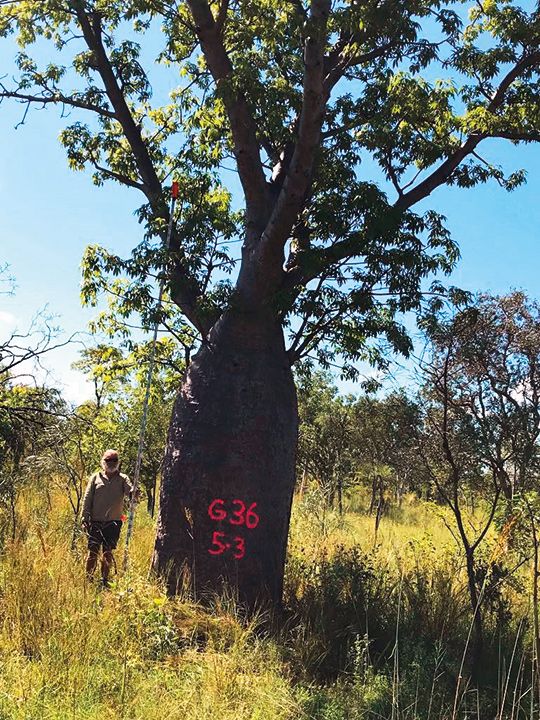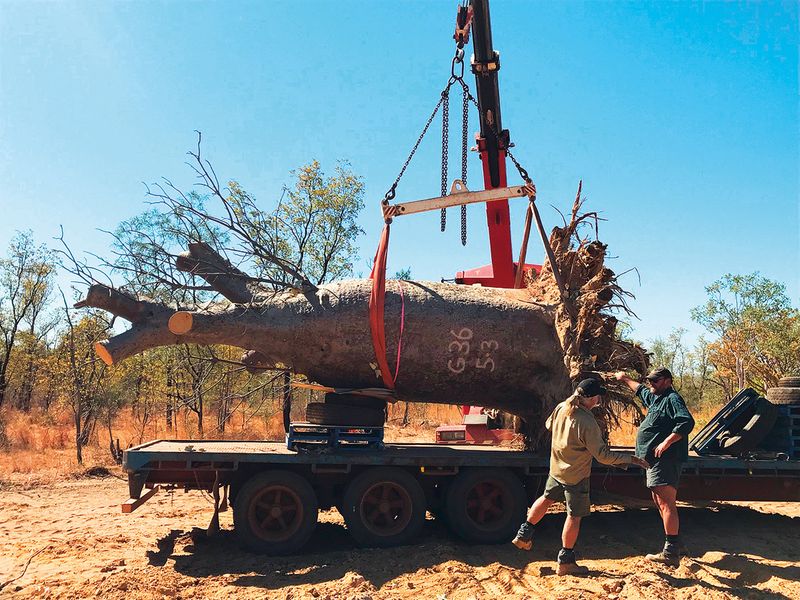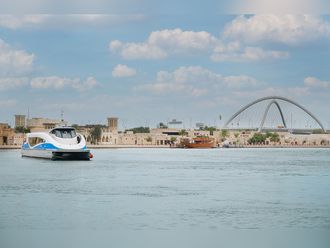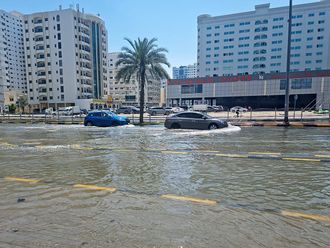
Dubai: The majestic baobab trees that were recently spotted in Dubai travelled thousands of kilometres from Australia, and will live here probably for over a thousand more years, landscaping experts involved in the project told Gulf News.
Last month, Gulf News reported that residents and tourists were curious to know the name and origin of the strange-looking trees with wide bottle-shaped trunks and entangled branches in Al Seef historical area.
When contacted, an expert from Dubai Municipality’s Parks and Horticulture Department identified the trees as Adansonia grandidieri, known as Grandidier’s baobab from Madagascar.
However, Josef Perner from Australia has confirmed that his company Cycad International supplied the trees and they are of the Australian Adansonia gregorii species from the Kimberley in the northernmost top of Western Australia.

“It is the only baobab found in Australia,” Perner told Gulf News.
He said Cycad International saves the trees from destruction from land clearing operations for agriculture by finding projects and customers interested in their unique and architecturally striking beauty.
Perner’s local partner James Palmer, who previously worked with WT Burden Middle East, and was present during the planting of the trees in Dubai, said the trees had been supplied to numerous locations across the city.
“There are three next to the Four Seasons Hotel at the entrance to Jumeirah Bay Island, and another three opposite the entrance to the Bulgari Hotel (and Resorts) on Jumeirah Bay Island,” said Palmer.
Following this, four trees were imported for the then developing project Al Seef by Meraas and thereafter a further three were imported for the roundabout near the Ruler’s Court and historical Al Fahidi District, according to landscape architecture firm Cracknell which was responsible for the landscape design, sourcing and coordination of locations in Al Seef.
Astonishing landscape
It was an idea to create an “astonishing landscape” that led Cracknell to search for such trees on the internet, explained Maarten Venter, senior director. “While searching the internet for what is defined as an ‘astonishing landscape,’ I discovered images of the Madagascar baobab. Upon research, we got to know that the Madagascar baobab (Adansonii grandidieri) is endemic and a protected species and cannot be exported.”

Cracknell then contacted Cycad International as they were aware that the latter was exporting the Australian baobab Adansonia gregorii.
“The trees were selected for their unique character, the sculptural form ‘never seen before in Dubai’ and the ability to adapt to the UAE climate,” said Venter.
Estimated to be between 150-500 years, Palmer said, these trees were dug and transported by road to ports in Darwin or Brisbane and shipped to Jebel Ali port in 40ft open-top sea containers, with one tree per container.
“They are very rarely exported due to limited availability. These will probably be the last in the UAE and possibly the last exported from Australia ever again,” said Palmer.
Though they are not endangered, Perner said his company has a special license to excavate and transport the trees.
Journey of months
“The whole journey of relocating a baobab tree takes months, including the quarantine period of two weeks,” said Perner.

“We do everything legally with proper documentation, right from numbering them for registration, pruning the trees, then excavating the area for uprooting them and transporting them thousands of kilometres by road in flat-bed trucks and further containerising them for shipping.”
In the case of the trees in Al Seef, the whole journey took three months, said Venter.
The experts said the baobabs come from a very hot area in the north of Australia and are very well suited to the Dubai climate. The succulent trees store water and are deciduous and hence require less water than a palm tree over a year.
“We would expect them to eventually end up very large. But we won’t see that, perhaps our great, great, great, great, great grandchildren will see them larger possibly three to four metres across or bigger. I would expect them to outlive all the projects and in the future require moving or the area that they are planted in to be upgraded,” added Palmer.












